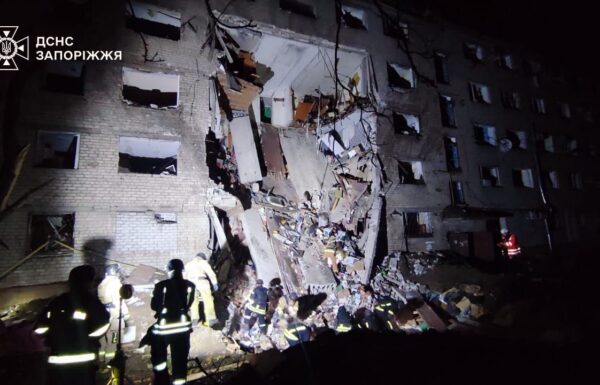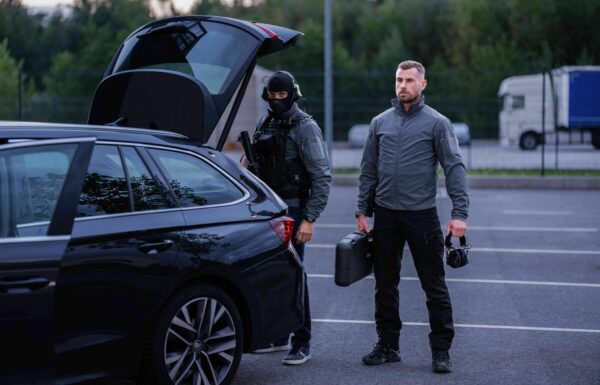Poland has finally decided to seriously acknowledge that, besides the military, there is such a thing as civil protection and civil defense. For three decades, the topic appeared mainly in reports by the Supreme Audit Office (NIK), which repeated the same refrain every few years: no shelters, no evacuation plans, no equipment, and no personnel. Now, following the experiences of the pandemic, the refugee crisis, and, above all, Russia’s aggression against Ukraine, politicians have received a wake-up call. This is how the Civil Protection and Civil Defense Program for 2025–2026 was born.
On paper, it looks impressive. A total of 34 billion PLN has been allocated, with 16.7 billion allocated in 2025 and 17.2 billion allocated in 2026. The government promises a “breakthrough in civil security,” and local governments are finally getting a chance to fund what, for years, existed only on paper. The largest share, approximately 5 billion PLN annually, is allocated to municipalities and counties.

The Civil Protection and Civil Defense Program for 2025–2026 is a new government strategy aimed at organizing the long-neglected civil defense and population protection system / Photo: Miłosz Kozakiewicz, PUW via Ministry of the Interior and Administration (MSWiA)
Funds can be used for renovating and building shelters, equipping evacuation points, purchasing power generators, radio transmitters, masks, and emergency kits. Additional billions will be allocated to the Ministry of the Interior and Administration (MSWiA) and regional governors, who are responsible for coordinating the program, as well as to the Government Agency for Strategic Reserves. This agency is expected to stock warehouses with more than just tons of face masks left over from the pandemic. The Ministry of Health will also receive its share, as emergency medical services are an integral part of the civil protection system. This includes the modernization of helicopter landing pads for the Medical Air Rescue Service (LPR) and an upgraded network of advanced ambulances.
At this stage, one might be tempted to applaud and say, “Finally, something is happening.” The problem is, we’re starting from complete ruin. Officially, Poland has over 60,000 shelter-type structures and hideouts, but in practice, most are decaying Cold War-era basements with mold on the walls.
In many cities, they survive only on maps. Local governments conducting inventories are uncovering a grim reality: many shelters were long ago converted into sports clubs, storage units, or private cellars. In a real emergency, only a few percent of them would be usable.
Here lies the program’s first major weakness: the lack of rigorous technical standards. What exactly does “shelter” mean in the 21st century? Is a thick wall and no windows enough, or should we require filtered ventilation systems, fire protection, backup power, and airtight doors? These details are missing from the documentation. The risk is that municipalities will rush to spend billions refurbishing old basements that, when faced with real threats, such as shockwaves or chemical contamination, turn out to be little more than an illusion of safety.
The second problem is coordination and oversight. The MSWiA assures that regional governors will account for every penny. Still, there’s no real-time central registry of shelters, nor a warning system that can reliably tell people where to go. Compare this to Finland or Switzerland: there, every citizen knows the location of their shelter, and the state can close the entire network and switch to crisis mode within hours. In Poland, we’re still stuck in a “everyone for themselves” mindset.
The third gap is less flashy but just as crucial: education and drills. The best shelter won’t help if residents don’t know where the entrance is, and the keys are with a caretaker who’s away for the weekend. The Nordic and Baltic countries have long conducted mandatory training and testing of alarms. In Poland? The last nationwide civil defense drill happened back when sepia was the dominant color on TV. The program doesn’t address this directly, because education isn’t flashy, it doesn’t produce photos for glossy brochures.
Is the program needed despite these flaws? Absolutely. The past few years have made it painfully clear that civil security is not a luxury. When a missile hit Przewodów in 2022, and in 2024, a series of fires and energy failures paralyzed several regions, it became clear that the state had plenty of plans, but no actual means. Now, at least, there’s real money and political will to make a change.
Will it be enough? Of course not, if the program turns into a festival of tenders and press conferences. Civil defense is effective only when it combines complex infrastructure, efficient procedures, and informed citizens. If even one of those pillars is missing, no amount of money or propaganda will make up for it.
That’s why the real test of this program won’t come during PowerPoint presentations; it will come with the first real crisis. If, in that moment, people know where to go, how to react, and whom to listen to, it will mean those billions weren’t wasted. If not, we’ll end up back in a Cold War-era basement, next to a bicycle, some mold, and a padlock that hasn’t been opened in decades.































